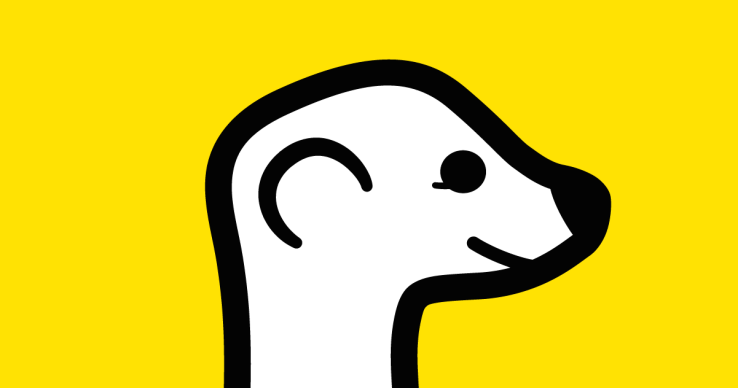
Why don’t YAYA consumers read their local newspapers anymore? It’s because the way they consume news and information isn’t on a one-day cycle. News is now on a 24-7-365 operation, thanks to social media apps such as Twitter and Facebook. YAYAs crave a sense of connection in their rapidly changing world. Even brands such as Snapchat understand the concept of instant gratification that fuels the younger Millennial generation.
All right, you’re probably thinking to yourself, “Thanks for telling me everything I already know.” But in the past week, there has been a revolutionary app that combines all of these features that YAYAs crave: Meerkat.
YAYA consumers’ days begin by absorbing new while huddled over their smartphones. They hope to soak up all of the information Twitter provides can provide before they finish their first cup of coffee. YAYAs want to see things as they happen and feel like they are a part of the story.
Meerkat is a live-streaming video app. It allows users to create their own story or jump into one that already exists.
According to TechCrunch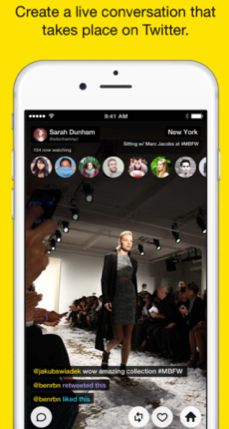 , “at any moment, you can start a broadcast of yourself on Meerkat, which triggers a tweet of the link to your stream and a notification to any of your Twitter followers who use its app. Anyone can tune in on the web or through Meerkat, and chime in with comments that are sent as Twitter @ replies. When you’re done, your video disappears unless you save it to your phone.”
, “at any moment, you can start a broadcast of yourself on Meerkat, which triggers a tweet of the link to your stream and a notification to any of your Twitter followers who use its app. Anyone can tune in on the web or through Meerkat, and chime in with comments that are sent as Twitter @ replies. When you’re done, your video disappears unless you save it to your phone.”
What does this mean? It means that followers have to click the link in real-time, or they lose the opportunity to see the video. It reinforces FOMO, fear of missing out, and requires viewers to respond immediately to become a part of the story.
In my opinion this is comparable to Snapchat, except for the fact that it forces users to choose to interact immediately. It holds the potential to change how video is distributed and news is reported by giving people the ability to be in two places at once, an age-old adage brought to life.
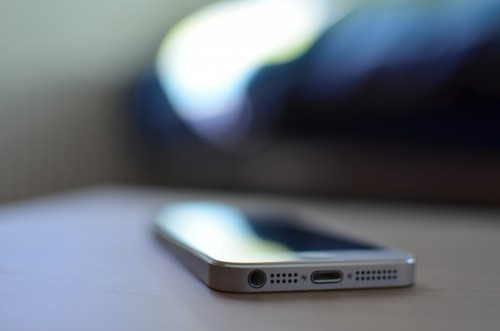
As I scrolled through my Instagram feed last week, I couldn’t help but notice the repeating post of a blank women’s silhouette with the text, “Not-there.org.” Celebrities like Blake Lively and Jessica Alba posted the image to their accounts in honor of celebrating International Women’s Day. Little did I know that these celebrities’ posts were part of a much bigger movement captivating the social sphere in an effort to raise awareness about gender equality.

The spot “We’re Not There Yet,” released by The Bill, Hillary & Chelsea Clinton Foundation, features the voices of Amy Poehler, Sienna Miller and Cameron Diaz discussing how even though it is 2015, women still don’t have the same rights as men in the work place. In an effort to raise awareness, brands such as Under Armour and Allure Magazine supported the movement, displaying ads and magazine covers without female characters represented.

So what does this mean for YAYA women? According to the Institute for Women’s Policy Research, in 2013, female full-time workers made only 78 cents for every dollar earned by men, a gender wage gap of 22 percent. In addition, if change continues at the same pace as it has for the past fifty years, it will take 44 years, until 2058, for women to reach pay parity.
The YAYA generation is hearing this message loud and clear, and powerful advertising such as the “We’re Not There Yet” campaign is an effective way to influence them. YAYA consumers want authenticity; they want to hear the truth. And the truth is that women to this day are still not getting fair and equal treatment. This is a cause that all YAYA women can rally around as they enter and thrive in the work place.
Despite the impact of International Women’s Day and the shocking statistics that were released, the reality television show, The Bachelor, decided to drop the news that the next season of The Bachelorette would feature not one, but two bachelorettes. The response? Outrage that the show would belittle women that way, and even moreso that they would announce the change a day after International Women’s Day. This anger is proof that the “We’re Not There Yet” campaign is changing people’s minds and inspiring the YAYA market to believe in making a change and fighting for gender equality.
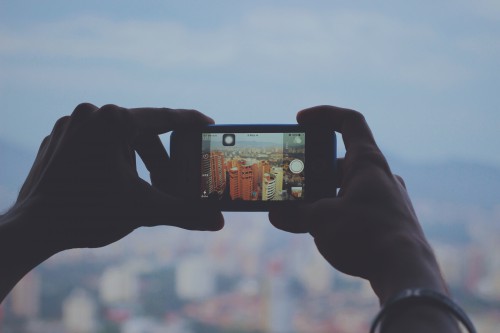
Besides relaxing on the beach this past spring break, I was also looking forward to getting away from my phone’s incessant rings, dings and vibrations. This would have been possible, except for one major problem — I couldn’t put my phone down.
It’s no secret that fellow YAYA consumers are just addicted to smartphones. According to a July 2014 Nielsen study, 18- to 24-year-olds spend the most time out of any age group on smartphone apps, clocking in more than 37 hours each month on an average of 28 apps.
At first, this sounded like a ridiculous amount of apps and time. But after I thought about the way I’d used my phone over spring break, the statistic suddenly didn’t seem so crazy. After all, I downloaded the Turbulence Map app to ease my fear of flying. I used a mobile boarding pass for my flights. I booked Uber rides all around town. I Venmo-ed my friends for picking up the bill at dinner. I probably spent more time documenting the ocean view with my phone’s camera than actually stopping to look at the beach. And that was just the first day.
Clearly, smartphones have eliminated the need for so many things, like disposable cameras, maps and a good taxi wave. Their next victim? Our wallets.
Brands can expect the smartphone-obsessed YAYA market to embrace mobile payment apps in the very near future. While it’s true that current millennial usage of mobile payment apps like Google Wallet or Apple Pay is low, experts anticipate a change in 2015.
According to a recent FICO study, 32 percent of millennials said that they are “very likely to use mobile payment providers in the next 12 months,” compared to just 8 percent of respondents aged 50 or over who said the same. What’s more, a study by J. Walter Thompson found that 44 percent of millennials would rather use their mobile phone than cash to pay for small items, and that 70 percent think “the way we pay for pay for things will be totally different in 5 years.” Seventy percent! I can already picture my future explaining to my children what a wallet was.
So if there is one thing brands can bank on, it’s that millennials will become increasingly dependent, both mentally and financially, on their smartphones. My advice to brands looking to appeal to the YAYA market: give us opportunities to pay with our beloved smartphones and reap the benefits. We’ll not only be impressed with your staying ahead of the curve — we’ll thank you for it with our dollars (hopefully, with a simple swipe!).
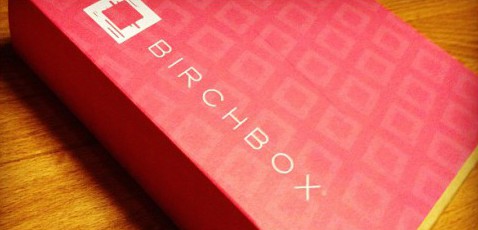
It was a typical Tuesday night. I was working on homework and watching a “Fixer Upper” marathon on HGTV when I heard a commercial that broke my train of thought. I glanced up, intrigued, then quickly searched the brand. I found myself immersed in a foreign community, filled with people who love customization, convenience and exclusivity. It was a community of subscription boxes. And I wanted in.

Birchbox sends both male and female subscribers a monthly box, for only $10, containing products tailored based on a beauty or grooming profile completed upon registration. Subscribers may choose from a list of 800 designer brands including Anastasia Beverly Hills, Cartier, Isaac Mizrahi, Kate Spade, La Mer Collections, Oscar de la Renta, Salvatore Ferragamo and The Honest Company.
High end samples from brands like these for only $10 a month seems too good to be true, but because designers see subscription boxes as marketing platforms, oftentimes companies like Birchbox receive samples for free or at a low cost. This allows them to offer consumers these boxes for such reasonable prices.
With another quick search, I found myself in a whole new world. Birchbox is not alone; there are 123 different subscription box services just in the beauty category. And it doesn’t seem like this new industry is slowing down, according to Fast Company, which reported that since 2011, the subscription commerce industry has seen growth at a rate of 200 percent per year, generating $5 billion in revenue in 2014.
The possibilities are endless. Fabletics offers workout gear for women, Try The World sends consumers delicious grub from different countries without the hassle of finding their passports, BarkBox delivers vet-approved dog treats and accessories to “pet parents,” and Harry’s sends subscribers branded razors and in-house shaving products to avoid a trip to the store.
All of this is centered on a concept of convenience for consumers, bringing them surprise, discovery and the rush of finding a gift on their doorsteps every month. These companies understand that millennials and YAYA consumers are busy. They don’t have time to go to the store and browse, yet they still crave quality products customized and tailored to their lifestyles, personalities and preferences.
These subscriptions also hit YAYA consumers on another level other than customization by positioning their brands as authentic and helping to facilitate a special relationship between the consumer and the company through the power of shared experiences. These subscription boxes align with what the YAYA market is looking for: convenience, customization and uniqueness. It also shows brands that understanding the power of relationships with YAYA consumers is valuable because it allows for their brand and consumer bond to form somewhere other than a physical brick-and-mortar store.
As a music enthusiast, I tend to get considerably excited at this time of the year. Winter is over, spring is in full force and all I want to do is be outside while watching my favorite artists play for massive crowds. That’s right — it’s festival season. This weekend, Coachella kicked off a long list of music festivals featuring both household names and up-and-comers.
Judging by the sprawling crowds these festivals attract, I’m clearly not the only one excited about events like these. These crowds are largely made up of millennials, who, according to a survey from Eventbrite, are invested in experiences. The survey found that 72 percent of millennials would like to increase their spending on experiences, with 77 percent of 18- to 34-year-olds claiming that the best memories of their lives were made at live events.
While festivals offer music-lovers an experience on a vast scale, they also offer brands a great opportunity to reach these attendees. According to a survey from Nielsen, 76 percent of festival attendees and 51 percent of all consumers feel more favorable toward brands that sponsor a tour or concert.
As festivals have gained prominence among millennials, they have made noticeable efforts to be in tune with this demographic. At a recent iteration of Lollapalooza in Chicago, VH1 spent the weekend hosting a GIF Photobooth, which let festival attendees create shareable graphics. VH1 also owned the hashtag #BestLollaEver, where attendees would tweet their own pictures at the festival.
Brands like VH1 have taken advantage of this opportunity to connect with YAYA consumers in the past, but other brands have put in considerable effort as well. Red Bull offered festival scholarships while Lacoste gave out flower garland crowns in exchange for postings on social media. Additionally, Pitchfork Music Festival partnered with Rdio to create a free mobile app that offered features such as a map and a schedule.
YAYA consumers thrive on experiences, and the ones music festivals offer definitely leave a lasting impact. By connecting with YAYA consumers in a way that enhances the festival, brands can become part of that experience.

 , “at any moment, you can start a broadcast of yourself on Meerkat, which triggers a tweet of the link to your stream and a notification to any of your Twitter followers who use its app. Anyone can tune in on the web or through Meerkat, and chime in with comments that are sent as Twitter @ replies. When you’re done, your video disappears unless you save it to your phone.”
, “at any moment, you can start a broadcast of yourself on Meerkat, which triggers a tweet of the link to your stream and a notification to any of your Twitter followers who use its app. Anyone can tune in on the web or through Meerkat, and chime in with comments that are sent as Twitter @ replies. When you’re done, your video disappears unless you save it to your phone.”




